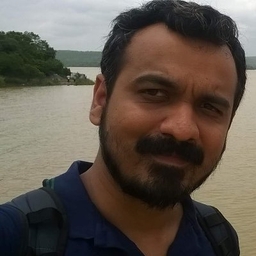
Ameya Paleja
Freelance Writer at Freelance
Writer at Interesting Engineering
Write about Genetics, Microbes, Tech & Public Policy. Bylines in @TheWireScience @SciResMatters @ThePrintScience @TheQuint @DeccanHerald @thenewsminute
Articles
-
1 day ago |
interestingengineering.com | Ameya Paleja
Researchers at Xi’an Jiaotong University in China have found a novel approach to synthesizing superheavy element nuclei beyond uranium using less beam energy than conventional approaches. This could open up newer possibilities in making superheavy elements in the lab and understanding nuclear stability at higher atomic numbers. Superheavy elements are elements with a large number of protons in their nuclei, which makes them unstable.
-
2 days ago |
interestingengineering.com | Ameya Paleja
Hard drives made from a novel molecule developed by researchers at the Australian National University (ANU) and the University of Manchester could revolutionize data storage shortly. A postage-sized drive that works at temperatures seen on the dark side of the Moon can store half a million TikTok videos, marking a significant improvement over current storage methodologies, a press release said.
-
1 week ago |
interestingengineering.com | Ameya Paleja
Construction of the first full-scale breakwater system for harbors that doubles as a wave-based energy generator has begun in Boulogne-sur-Mer, northern France. The project is a collaborative effort between French institutes Ifremer and GEPS Techno, with construction responsibilities being handled by UK-based Legendre Group. In a bid to move away from fossil fuels, scientists are looking for cleaner approaches to meeting our energy demands.
-
1 week ago |
interestingengineering.com | Ameya Paleja
The experimental study setup uses a large super-conducting magnet. G. Otto/GSI/FAIRResearchers at Chalmers University of Technology in Sweden carried out nuclear fission reactions in 100 different types of exotic nuclei of elements like platinum, mercury, and lead in a bid to understand the reaction better. In addition to helping us generate cleaner energy in the future, the research also sheds light on how elements are formed in the universe, according to a press release by the institute.
-
1 week ago |
interestingengineering.com | Ameya Paleja
Researchers at the Plasma Science and Fusion Center at the Massachusetts Institute of Technology (MIT) have developed a superconducting diode (SD)âbased rectifier that helps deliver direct current (DC) to superconducting classical and quantum computers. The technology can help the search for dark matter in detection circuits operating at research institutes such as CERN.
Try JournoFinder For Free
Search and contact over 1M+ journalist profiles, browse 100M+ articles, and unlock powerful PR tools.
Start Your 7-Day Free Trial →Coverage map
X (formerly Twitter)
- Followers
- 142
- Tweets
- 422
- DMs Open
- Yes

RT @anshumonsharma: Recreated @arrahman ‘s iconic Jashn-e-bahaara in 70s Bollywood style by using @adityakalway ‘s vocals and converting th…

RT @ParveenKaswan: This is what inspiration looks like. Sheetal Devi is crowned as Asian Para games champion. She is worlds first armless f…